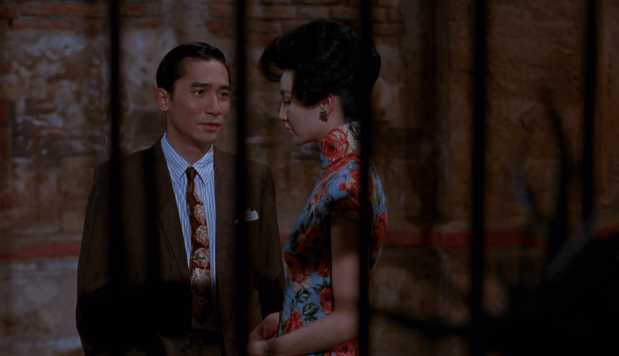This is Best Movie of All Time, an eternal search for the greatest film ever. Read the full archives here.
A lot of the discussion in this series so far has danced around what makes a film even eligible for the discussion. I don’t think it’s even possible to know, which is why this is an “eternal search.” As an American born in the 1980s, I have a specific perspective and most of the film I’ve seen is American film. I try to branch out when I can, but a lot of my background and a lot of what’s available to me is one kind of cinema.
The great lists are a place to start, but even that is imperfect. For every list, someone has a criticism. The most famous list used today is probably AFI’s “100 Years… 100 Movies” list. The “American” in “American Film Institute” should tell you one problem, but the critic Jonathan Rosenbaum offers many others in his rebuttal and alternate list. You could do worse than the list Sight & Sound puts out once a decade. Robert Ebert called it the only one that real cinema folks “take seriously.”
The detail I find most interesting in all versions of “great” lists is that recency bias works against you. On the one hand, this isn’t all that shocking. People are more likely to list films in the canon on their list than to put something they just saw on it and it takes a long time for any collective consensus to form around anything. The more democratic lists like IMDB’s Top 100 work the opposite way. Everyone’s favorite movie is the thing they just saw.
AFI’s top 100 lists exactly one move from 2000 or later: The Lord of the Rings: The Fellowship of the Ring. The Sight & Sound list only has three. IMDB’s lists 37. This is a bigger statement about IMDB than it is anything else, but it’s interesting to see how these things shake out over time.
Yi Yi and Mulholland Drive come in at #93 and #28 respectively on the Sight & Sound list, but In the Mood for Love beats them both at #24. The methodology is not built exactly this way, but as the most recently movie released ahead of it is from 1979 (Apocalypse Now), we are left to assume that Sight & Sound says this is the best movie of the last thirty years. Those are pretty big shoes.
Chow Mo-wan and Su Li-shen meet in a hallway in Hong Kong in the 1960s. They both are in marriages that seem to be stressed, but in ways we struggle to understand at first. We see only parts of life, and even then only for extremely brief moments. We see the passing of time made clear, but no progression seems to take place.
Chow is a journalist and Su is a secretary. Their spouses both work and are frequently away, which creates a space for a friendship except for the external forces against them. Their neighbors are in the hallway all the time, asking after each of them and their spouses, and the pressure of society drills into them over and over. Su frequently dresses up to go to the noodle shop down the alley and Chow finds himself running into her in ways he can’t avoid or really handle.
The experience of these run-ins is powerful. Director Wong Kar-wai really wants us to feel the social constraints of two married neighbors who have no one to talk to but also can’t really talk to each other without creating a scandal. The pair and the supporting cast encounter others over and over in cramped hallways and have short conversations. In another director’s hands we’d get this explained to us, but here we just see so many versions in a row that we feel overwhelmed by the experience. It’s a better way to convey the world around them and how they feel moving around in it and the experience really works.
It’s also important to see this to realize this isn’t a couple slowly forming, exactly. It becomes clear that each of them is in a failing marriage and that infidelity is likely, but then even more shocking realizations become even more clear. This could be the setup for a love-rectangle, but that’s not exactly it. The two form a partnership, more accurately, and pass time with clandestine, chaste encounters. They even become business partners, after a fashion.
The film eventually follows the pair as they pursue their own version of happiness, but it isn’t the conclusion you’d anticipate. It isn’t even the direction you probably would expect, with really “important” narrative pieces omitted. This omission isn’t confusing, but it is just enough to make you wonder how our cast made it through all this, and if they could have done any of it differently.
It’s a love story with less love than you’re probably used to seeing in a genre film, but it’s definitely still a romance. I found it beautiful, often, and shocking without being extreme. Most of the film happens in hallways and offices and it asks you to look at characters, often obscured by railings or door frames, who have to consider very carefully if they are willing to reach for something new. I don’t think “love story” really sets the tone correctly, but this is too complex for any one identifier. The most powerful emotion is the tension of possibility that runs through the whole thing and really, though all of our lives. There are so many moments where another decision in the past would change your present life, and In the Mood for Love shows both the really obvious paths not taken and the small, quiet moments that only turned out to be other paths much later.
Is it better than the last movie we looked at? Dick Johnson is Dead is “modern” even compared to a “modern classic” like this one. This would be a better question with a documentary. There are a few more documentaries on my current list and I’ll revisit the question then. I certainly liked In the Mood for Love more.
Is it the best movie of all time? There are a handful of scenes where the two main characters act out other conversations, but we only realize they were acting after one of them breaks the scene. The film would work without these, but they’re what will stick with me for a long time after seeing it. The performances are strong, and they’d have to be with this small of a cast, but they are never stronger than these immediate shifts between swept-up lovers and then their real characters, neighbors who might be falling for each other and might not. These small touches, including an ending that I won’t spoil, pushes this one over the top for me. It’s not my favorite movie I’ve ever seen, but it is, I think, enough to edge out Badlands from the current top spot on our list.
You can watch In the Mood for Love on The Criterion Channel or HBO Max. You can recommend a movie to me for this series through email at readingatrecess @ gmail.com or on Twitter @alexbad and I will watch it, no matter what. Try to pick something good.

